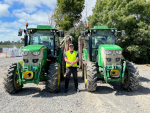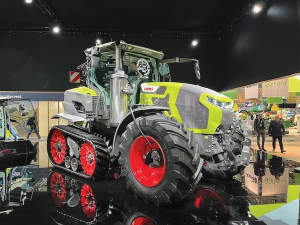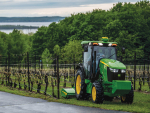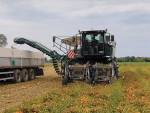A mechanical growing system being set up in Ashburton shows the potential for an alternative method of producing leafy greens to boost New Zealand’s food production security.
That’s the claim of New Zealand primary industries supply company Landlogic. It says the Ashburton set-up showcases what a vertical food production system can do.
It will be the first opportunity for many NZ horticulturists to see the Australian-designed modular system in action.
Designed for warehouse installation, with plants grown in multilevel trays contained in enclosed climate and light-controlled cells, the system is heavily automated with computer- controlled feeding, watering, lighting, and sensors monitoring temperature, pH, EC and humidity levels. Loading, harvesting, recovery and re-use of the growing medium and reloading the trays are also automated, as is the packaging machine.
This closed and autonomous system is said to be highly resistant to intrusion from pests and weeds, need no pesticides or herbicides and has a water efficiency rate of 99.9%.
Landlogic is the importer and distributor of Vertical Farm Systems for New Zealand and the Pacific.
Chief executive Alan Cottington says the increasing unpredictability and frequency of severe weather events and rising costs impacting traditional openfield farming meant it was more important than ever to consider new approaches to agriculture.
“Our food security is vulnerable when we rely on traditional farming methods or importing for leafy greens, which are a basic and healthy food essential,” he adds.
“To remain competitive, New Zealand needs to get on board with this technology and ensure there will always be a reliable and efficient alternative to in-ground production available.”
Cottington says data sourced from Stats NZ shows that New Zealand’s annual production of leafy greens is 8400 tonnes grown on 1621 hectares.
He claims to grow the same volume with the XA Vertical Farm System would be just 12 hectares – making it a 99.25% more effective use of land.
A test bed VFS system in Australia’s Sunshine Coast factory was producing around 600kg of salad greens and herbs a week, delivering the resulting produce to local retailers and restaurants.
“Where traditional outdoor growing systems have taken such a huge hit in recent floods and storms, VFS crop turn-around times are 28 days, regardless of external influences,” Cottington adds.
“Harvest times and end product quality are consistent and reliable, allowing commercial growers to confidently commit to delivery schedules and quantity agreements.”
He says by comparison, outdoor planting to harvest takes approximately 65–80 days for midsummer plantings, and up to 130 days for autumn/winter plantings.
The company says the VFS system is best suited to fast-growing crops, including leafy greens such as loose-leaf lettuce, bok choy, beet chard, and herbs such as coriander and basil.

















